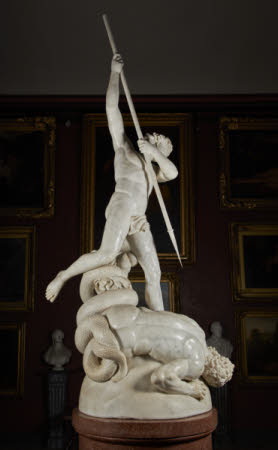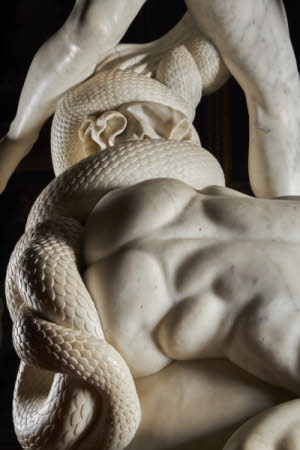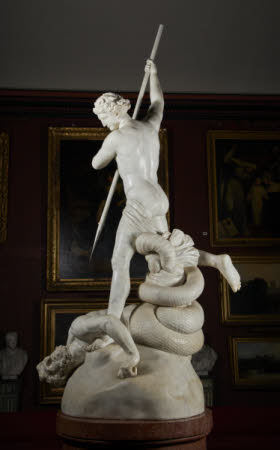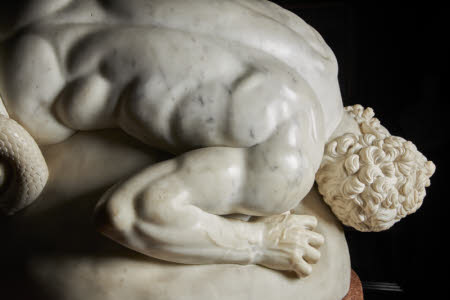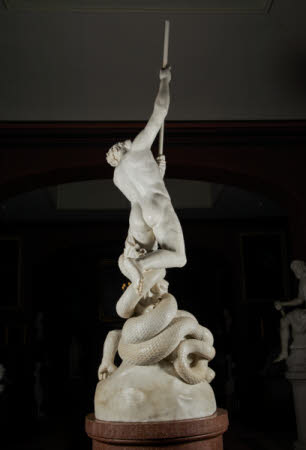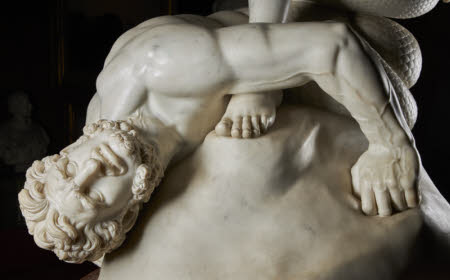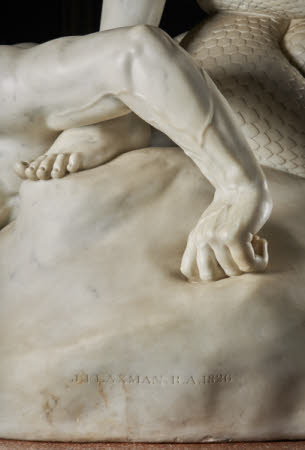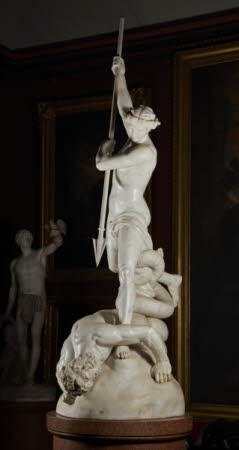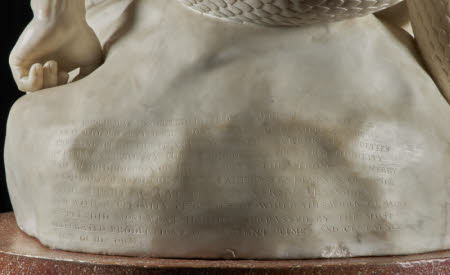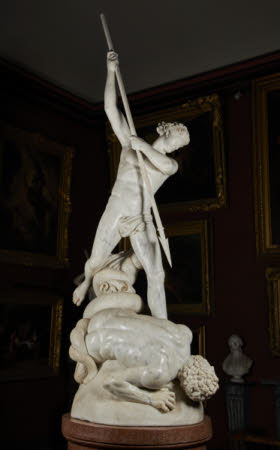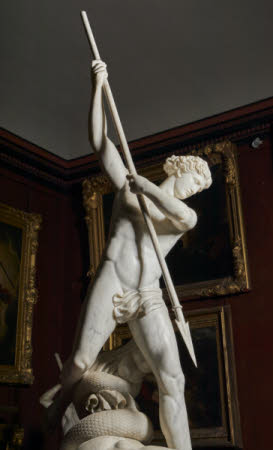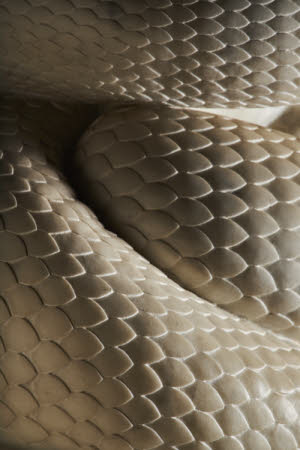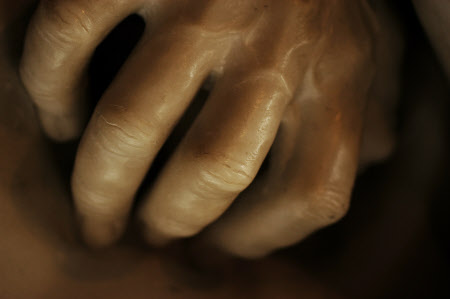Saint Michael overcoming Satan
John Flaxman RA (York 1755 – London 1826)
Category
Art / Sculpture
Date
1817 - 1826 (signed and dated)
Materials
Marble
Measurements
3440 mm high
Place of origin
England
Order this imageCollection
Petworth House and Park, West Sussex
NT 486401
Caption
Commissioned by the 3rd Earl of Egremont in 1817, this monumental work took nine years to complete.
Summary
Marble sculpture, Saint Michael overcoming Satan by John Flaxman RA (York 1755 – London 1826). A near naked St Michael stands astride a prostrate Satan, preparing to thrust his spear in Satan's side. A snake coils around Satan's buttocks. This masterpiece, which would have inspired thoughts of Milton's Paradise Lost, and for which the Square Bay was designed, is the 3rd Earl's supreme sculptural commission. Ordered before April 1817 and finished in 1826, it was carved (apart from the spear) from a single block of marble at a cost of £3,500. The 3rd Earl's laudatory inscription around the base compares Flaxman's achievement to 'the most celebrated productions of ancient times' and declares that it was unsurpassed by his contemporaries. Flaxman's small preliminary and his full-size plaster models are in the Victoria & Albert Museum. The plinth, whose original porphyry decoration has been restored, was designed to rotate so that the statue could be seen from different angles .
Provenance
Commissioned before April 1817, by George, 3rd Earl of Egremont, and for which he paid Flaxman £3,500, including the marble plus £71.00 for expenses, making a total of £4,516.00 paid by 29 August 1827; thence by descent, until the death in 1952 of the 3rd Lord Leconfield, who had given Petworth to the National Trust in 1947, and whose nephew and heir, John Wyndham, 6th Lord Leconfield and 1st Lord Egremont (1920-72) arranged for the acceptance of the major portion of the collections at Petworth in lieu of death duties (the first ever such arrangement) in 1956 by HM Treasury
Marks and inscriptions
THIS GROUP WAS EXECUTED IN 1826 BY JOHN FLAXMAN, R.A / A MAN WHO PRESENTED THE MOST STRIKING EXAMPLE OF THE / PREEMINENCE OF THE MENTAL OVER THE CORPOREAL FACULTIES / OF HUMAN NATURE, IN THE UNION OF THE GREATEST DEBILITY / AND DISPROPORTION OF FRAME WITH THE STRONGEST ENERGY / OF CHARACTER, WITH THE MOST EXALTED SENTIMENTS OF HONOR / WITH A HEART ACTUATED BY UNIVERSAL BENEVOLENCE / AND WITH A SUBLIMITY OF GENIUS OF WHICH THIS WORK REMAINS / A SPLENDID MONUMENT HARDLY SURPASSED BY THE MOST / CELEBRATED PRODUCTIONS OF ANCIENT TIMES AND CERTAINLY BY / NONE OF HIS OWN. (carved on base)
Makers and roles
John Flaxman RA (York 1755 – London 1826), sculptor

